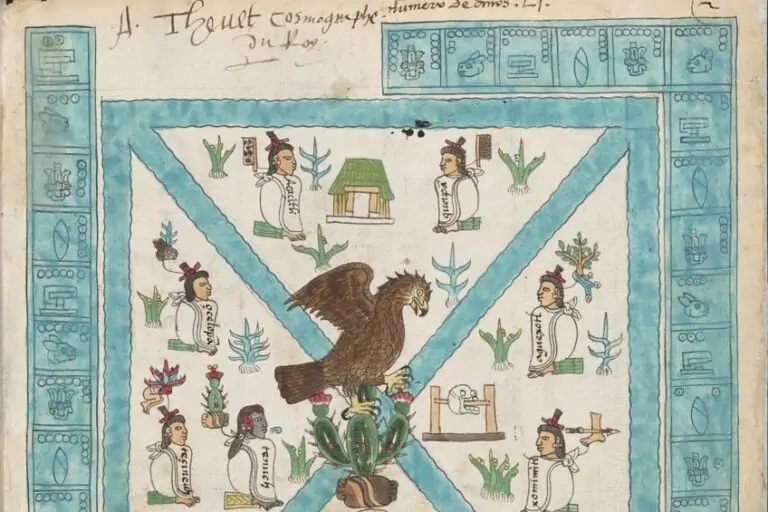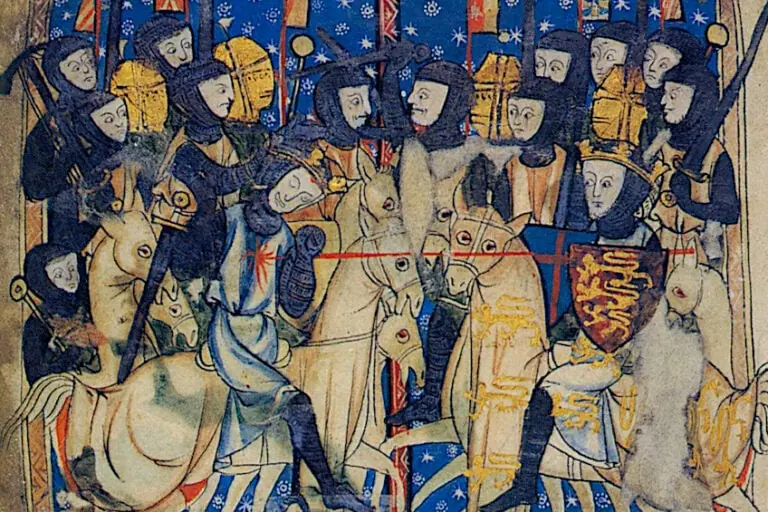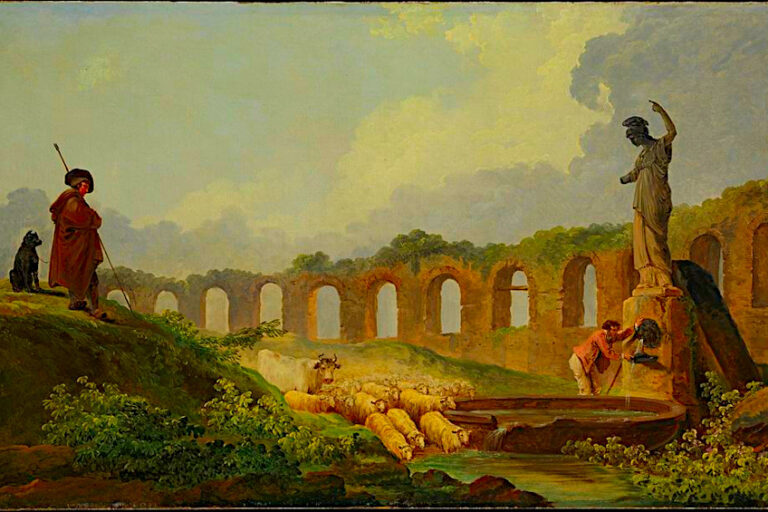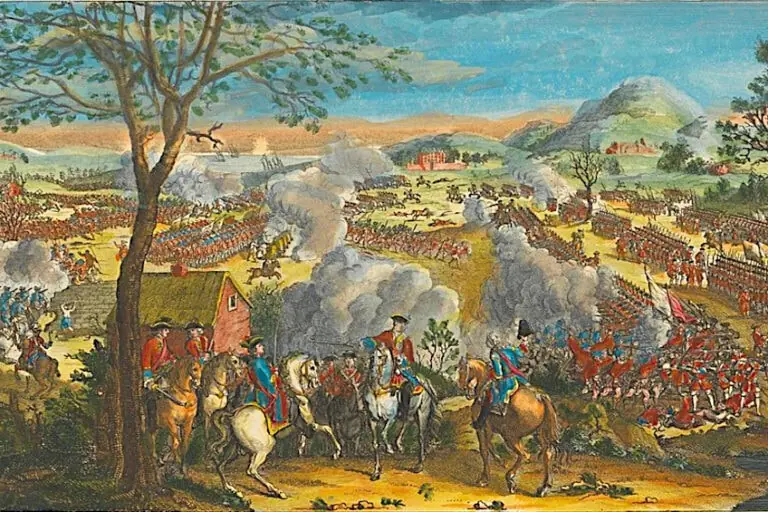Medieval Weapons – Different Types of Medieval Weapons
What comes to mind when you picture weapons of the Middle Ages? Perhaps you envision the courageous medieval knights on horseback in their shiny armor, brandishing lances and swords at their foes. However, the warriors of that age could choose from many types of medieval weapons. In this article, we will explore a list of the medieval weaponry that was available to the people in the Middle Ages!
The Most Popular Types of Medieval Weapons
The continuous private warfare and recurring invasions that characterized the Middle Ages demanded well-organized military units for both defense and offensive objectives. Military campaigns, which typically lasted several months from spring through fall, required the participation of all free males in the region. During times of warfare, many different types of medieval weapons were employed for both close-range and long-distance attacks. Below, we will look at a list of medieval weaponry that was used to protect and attack kingdoms and villages.
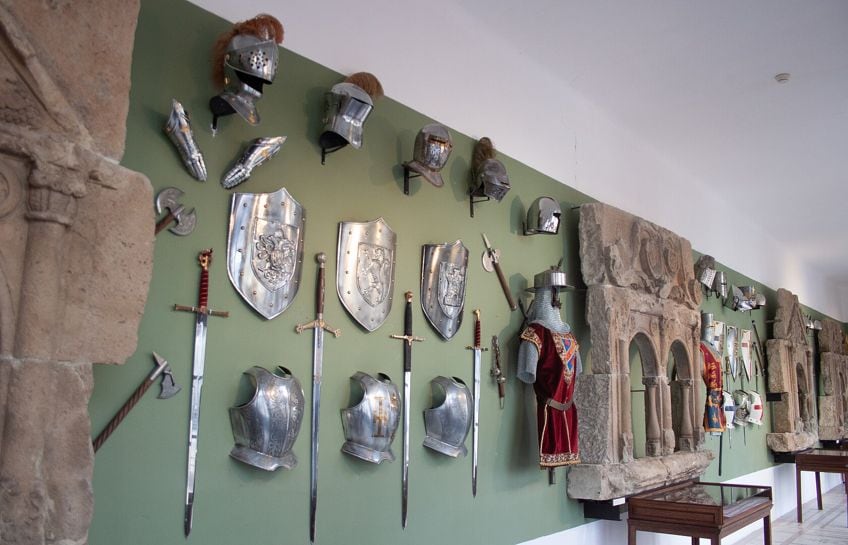 Exhibition of medieval weapons in the Rákóczi Museum (2021); Szilas, CC BY-SA 4.0, via Wikimedia Commons
Exhibition of medieval weapons in the Rákóczi Museum (2021); Szilas, CC BY-SA 4.0, via Wikimedia Commons
The Development of Medieval Weapons
As with all types of human technology and craft, medieval weaponry did not just spring up out of nowhere and was the result of many centuries of progress and refinement. What initially started as very crude and rudimentary weapons made from the available natural resources in the stone age, developed over time to become the finely crafted weaponry used in the medieval era.
Before we explore our list of medieval weaponry, let’s first learn how weaponry evolved from the Stone Age to the Middle Ages.
Weaponry from the Stone Age to the Bronze Age
People mostly used stone weapons and tools in the early phases of human civilization. Rudimentary tools such as spears, hand axes, and knives were manufactured by chipping and then shaping stones. The Copper Age arose as a period of transition between the Stone Age and the Bronze Age when cultures started to understand how to make use of metals. Copper was discovered and utilized to make weapons because it is a fairly soft and pliable metal. Copper weapons, however, were not as effective as those built of subsequently discovered materials.
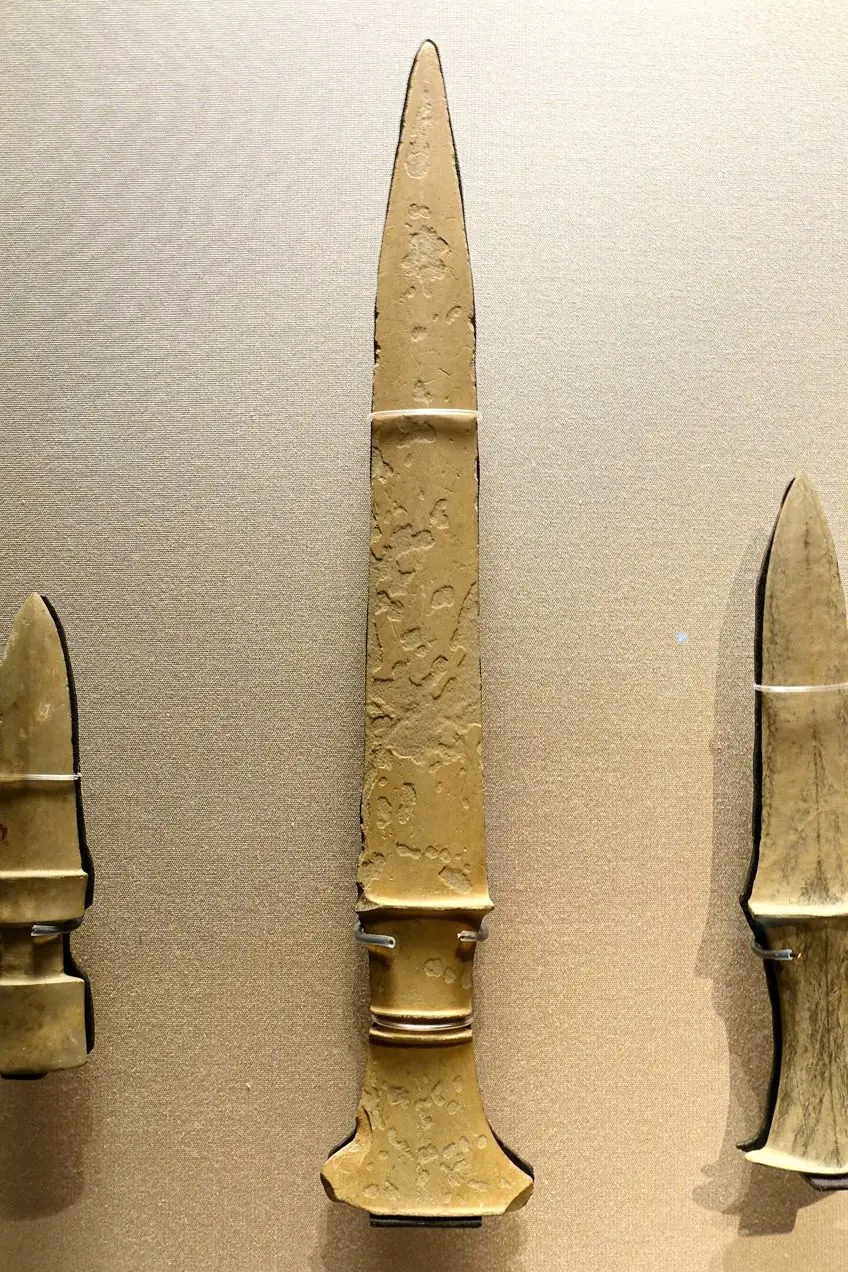 Dagger, attributed to Gyeongsangbuk-do, Korea, Bronze Age, (6th to 5th century BC); Daderot, Public domain, via Wikimedia Commons
Dagger, attributed to Gyeongsangbuk-do, Korea, Bronze Age, (6th to 5th century BC); Daderot, Public domain, via Wikimedia Commons
The creation and use of bronze, an alloy made from tin and copper, represented a significant advance in the manufacture of weaponry. When compared to copper, bronze was far more durable and robust, and had greater chopping and piercing qualities. Weapons from the Bronze Age comprised axes, swords, daggers, arrowheads, and spearheads. They were made by casting the bronze or hammering it into shape and had more refined designs. Bronze was able to be fashioned into complex forms, improving the usefulness and adaptability of the weapons and tools that were made.
Weaponry from the Bronze Age to the Middle Ages
Following the Bronze Age, the Iron Age saw a substantial change in weaponry development. Iron, a more durable and common metal than bronze, gradually supplanted bronze as the predominant metal for weaponry production. Iron weapons like arrowheads, spears, swords, and axes, became gradually more commonplace and widely available. Forging iron weapons allowed for better control over the shape and the degree of hardness of the metal. Military strategies and technology evolved as societies progressed. Chariots emerged as an important weapon platform, notably in combat, throughout the Bronze Age.
During the Iron Age, however, chariots steadily fell out of use, giving way to the formation of cavalry troops.
The Middle Ages experienced considerable advances in siege warfare. Castle construction became common, resulting in the invention of several siege weaponry capable of penetrating defense walls. To breach these fortifications, catapults, trebuchets, and battering rams were built. These weapons made sieges more successful and forever changed warfare dynamics. Defense equipment also advanced during the Middle Ages. Simple bronze or iron shields and helmets gave way to increasingly effective designs.
The Various Types of Medieval Weapons
When it comes to medieval weapons, there are two groups that weapons can be categorized as. The first group is called Melee weapons, and the second group is called ranged weapons. Below, we will discuss the difference between the two groups and the specific role each group played.
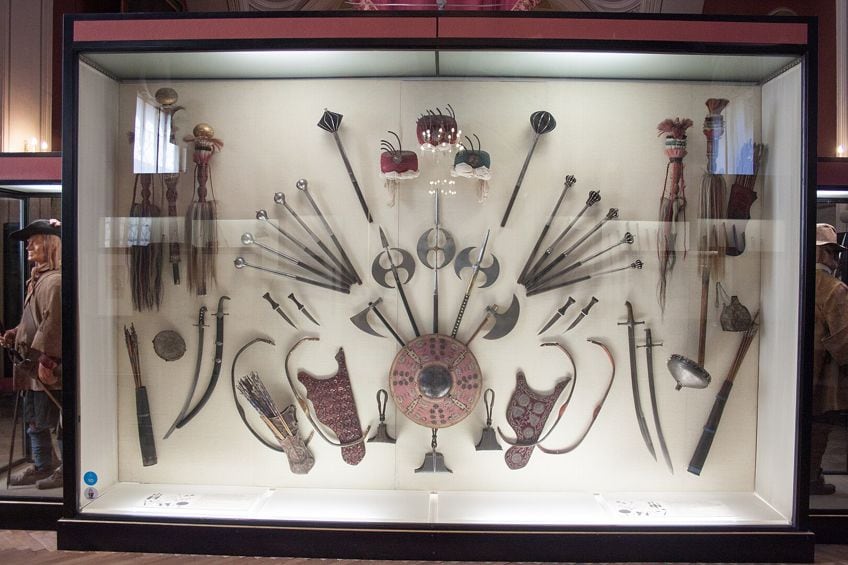 Medieval arms in the Heeresgeschichtliches Museum (2017); Photo by Szilas in the Heeresgeschichtliches Museum, Public domain, via Wikimedia Commons
Medieval arms in the Heeresgeschichtliches Museum (2017); Photo by Szilas in the Heeresgeschichtliches Museum, Public domain, via Wikimedia Commons
Melee Weaponry
In medieval warfare, melee weapons refer to close-combat weaponry. They were intended for use in hand-to-hand combat. Each of these weapons had its own set of beneficial uses, shortcomings, and specific applications. Knights, soldiers, and nobility all used swords as weapons in battle. Swords were used for slicing and stabbing, and their effective use demanded much training and skill. Another typical melee weapon was the ax.
They were excellent for hacking through armor and into flesh.
Maces and war hammers were other medieval melee weapons meant to inflict crushing strikes on the enemy. Polearms were multipurpose weapons that combined the best qualities of both axes and spears. These polearms comprised long shafts with spikes, blades, or hooks attached. Flails were unusual weapons made up of a chain tied to a handle and topped with a spiky ball.
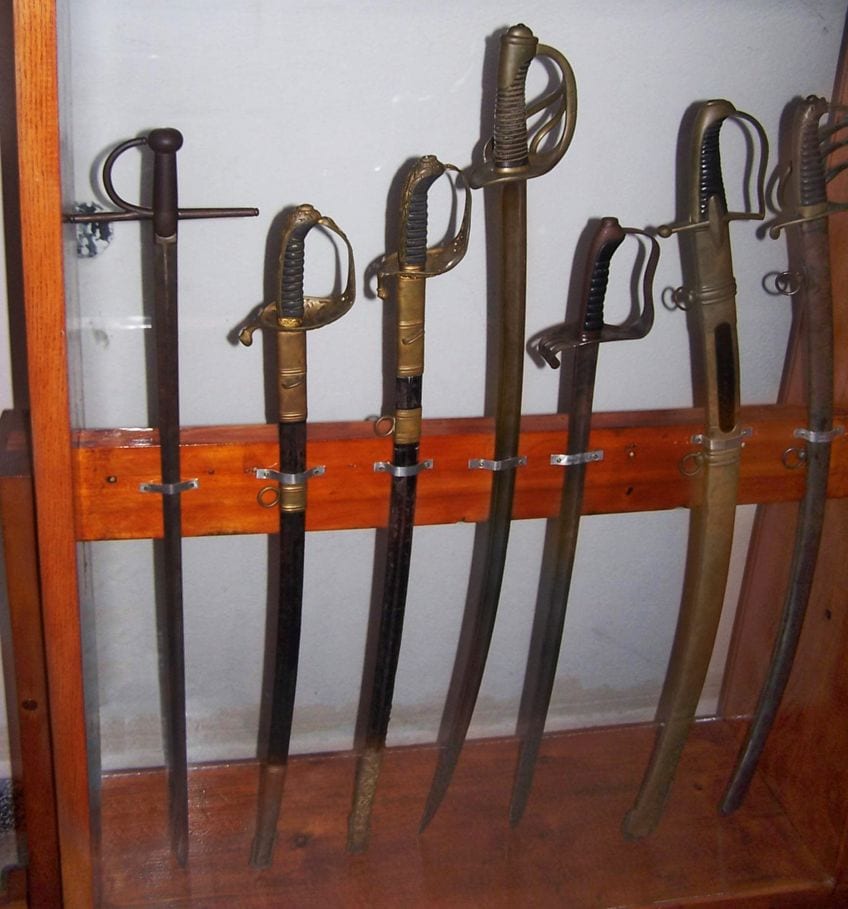 Melee weapons in Szczyrzyc Monastery museum (2006); Piotrus, CC BY-SA 3.0, via Wikimedia Commons
Melee weapons in Szczyrzyc Monastery museum (2006); Piotrus, CC BY-SA 3.0, via Wikimedia Commons
Ranged Weaponry
Ranged weapons were important in medieval warfare because they allowed warriors to confront adversaries from a safe distance. Welsh and English archers utilized the longbow as an effective weapon in the Middle Ages. It possessed a long draw length and could throw arrows with tremendous force and precision over long distances. Longbowmen were extremely efficient against armored adversaries. The crossbow was a portable projectile weapon that employed an apparatus to pull and tighten the string.
Crossbows had comparatively shorter draw lengths than longbows, but they were easy to aim with and necessitated less training to use.
Throwing knives and axes were portable weapons that could be thrown at opponents. They were utilized for short-range projectile strikes by both cavalry and infantry. To hit targets correctly, throwing weapons needed to be used with great skill and accuracy, and they were used to break up opposing formations or attack the enemy before moving in for close-quarter combat.
Our List of Medieval Weaponry
In the chapter below, we will explore the weapons of the Middle Ages in greater detail. In times of warfare during the Middle Ages, anything from farm implements to siege towers were employed, depending on what people could afford and what was available. Let’s begin with the famous swords of the Middle Ages.
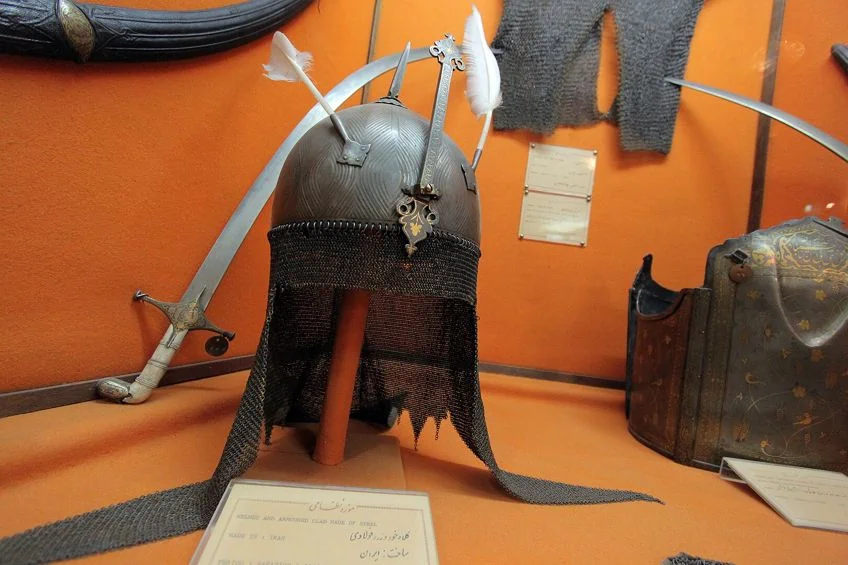 Afif-Abad Garden originally the Golshan Garden, is a museum complex in Shiraz, Iran (2009); Mostafameraji, CC BY-SA 4.0, via Wikimedia Commons
Afif-Abad Garden originally the Golshan Garden, is a museum complex in Shiraz, Iran (2009); Mostafameraji, CC BY-SA 4.0, via Wikimedia Commons
Medieval Swords
A number of hand-held tools were used as medieval weapons, although the sword was unquestionably the most popular weapon of choice. The sword was regarded as a representation of knighthood and was utilized in close-quarter combat for both defending and attacking. Knights of the Middle Ages often kept a sword at their side and gave them unique names. During the Middle Ages, two types of swords were typically used: a large two-handed blade that has a rounded end and a single-handed shorter sword that has more of a pointy end.
The shape and design of swords altered throughout the years and varied widely from one country to another, but their fundamental components remained basically the same over the course of time.
The medieval sword derives from the Roman spatha, a sword with a long tip spanning approximately three 80 to 90 centimeters in length that significantly influenced ancient Germanic swords during the Migration Period. The Viking sword contributed to medieval sword design with its sharp taper and tip, as well as deeper fullers running nearly the entire length of the sword. Between the 8th and 10th centuries, Viking swords were prevalent throughout Europe until they were eventually succeeded by a cruciform single-handed sword, which was used from the 11th century until the middle of the 14th century when the longsword came into use. Longswords had long blades and huge cruciform hilts, with a grip roughly 15 cm long. In battle, the longsword is often wielded with two hands, however, some can also be used single-handedly. Longswords were usually used for stabbing, slicing, and hewing.
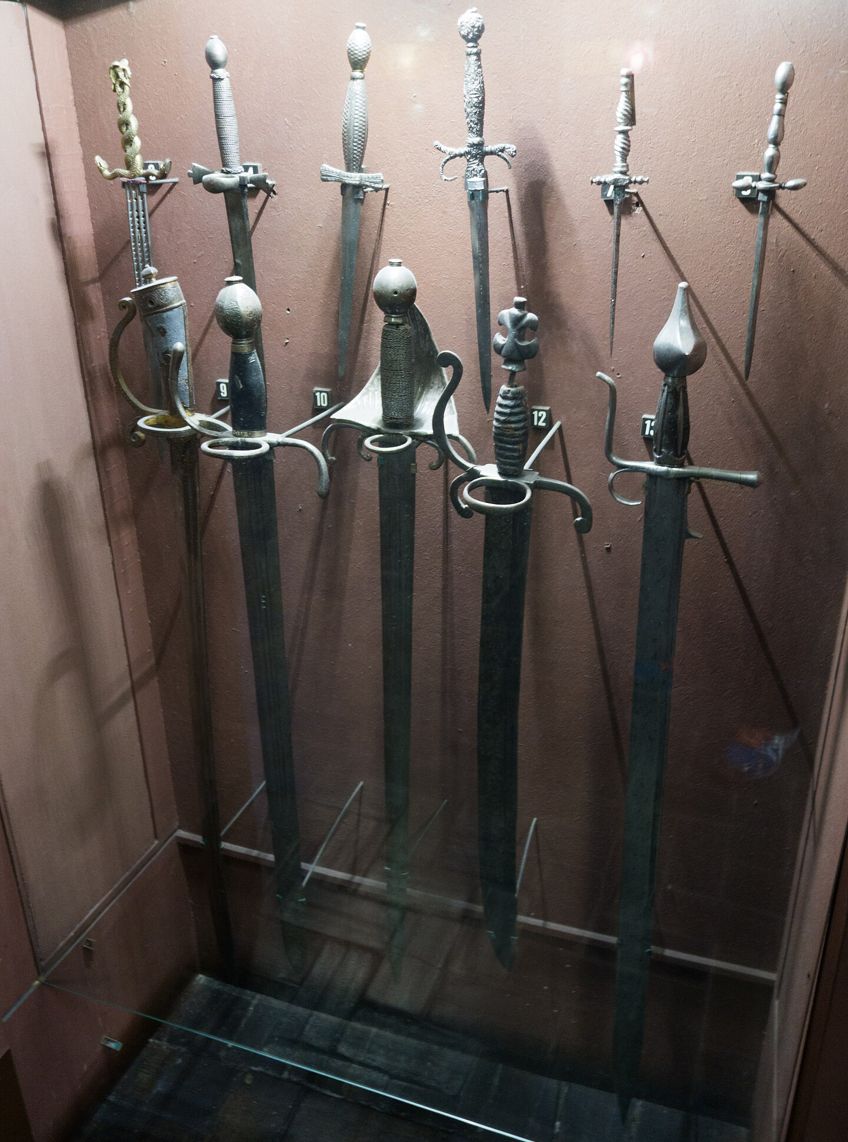 Medieval swords (2015); Thomas Quine, CC BY 2.0, via Wikimedia Commons
Medieval swords (2015); Thomas Quine, CC BY 2.0, via Wikimedia Commons
Medieval Daggers and Knives
A dagger is a two-edged weapon that is used for thrusting and stabbing. In close combat, daggers often serve as an additional defense weapon. In most cases, the tang continues into the handle along the blade’s centerline. Daggers vary from knives in that they are designed primarily for stabbing, while knives are typically single-edged and designed mostly for cutting. This difference is complicated by the fact that many daggers and knives can both be used for cutting and stabbing. From 1250 onwards, gravestones and other contemporaneous images depict knights with daggers or knives. Hilt and blade types grew to resemble miniature versions of swords, resulting in a late 15th-century fad for embellished hilts and sheaths.
It is also regarded as a church symbol since the dagger resembles a cross. With the introduction of defensive plate armor throughout the medieval period, the dagger became increasingly effective as a close-quarter weapon used for piercing armor gaps.
Weapons instruction books depicted the dagger being gripped in the hand with the blade pointed from the hand’s heel and used to deliver downward slashes. Straight strikes from a standard hammer grip were also utilized, though icepick jabs are more typically portrayed in manuals. The dagger was a typical murder weapon, used by ordinary citizens or resentful aristocracy seeking anonymity. A stiletto is a small knife with a long thin blade of various styles that is mostly used for stabbing. It can penetrate very deeply due to its thin form, which ends in a stiff pointed end. Even with the edged versions, most stiletti are not suitable for cutting. A poignard, initially a French term, is a light dagger used throughout the Middle Ages and into the Renaissance. It was usually employed for close-quarters stabbing or in combination with a rapier. A rondel dagger was a sort of stiff-bladed dagger popular in Europe from the 14th century onwards, used by everyone from traders to knights.
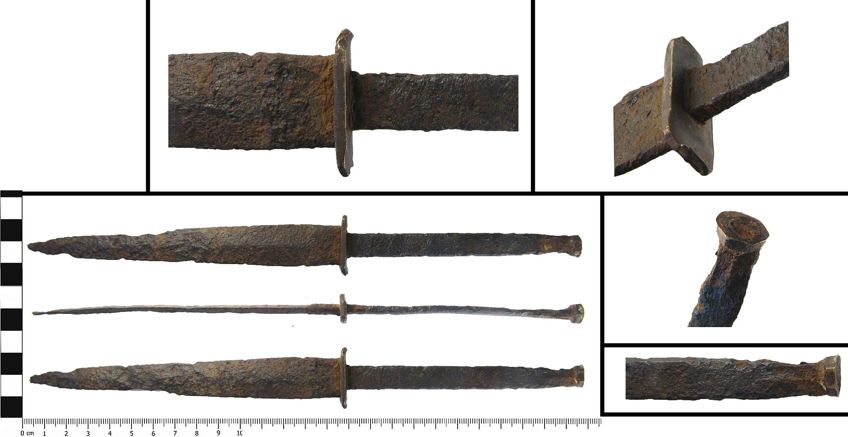 Post Medieval dagger (2014); The Portable Antiquities Scheme/ The Trustees of the British Museum, CC BY-SA 4.0, via Wikimedia Commons
Post Medieval dagger (2014); The Portable Antiquities Scheme/ The Trustees of the British Museum, CC BY-SA 4.0, via Wikimedia Commons
Clubs and Maces
A mace is regarded as a relatively straightforward and simple weapon that delivers forceful strikes with a substantial head on the end of a shaft. The mace is a derivative of the club and is unlike a hammer in that its head is radially symmetrical, allowing the strike to be executed effectively with any part of the head. A mace is constructed out of a substantial, wooden, or metal shaft with a copper, stone, iron, bronze, or steel headpiece. The head is typically the same thickness as or a little thicker than the shaft’s diameter and can be additionally designed with knobs or flanges to facilitate deeper penetration of the armor.
Metal armor and chainmail served to protect against the attacks of bladed weapons and stopped arrows and other objects throughout the Middle Ages.
War hammers and metal maces were able to inflict harm on well-armored knights because the power of a mace strike is great enough to produce damage without having to pierce the armor. The flanged mace is a prime instance of a mace capable of piercing armor. The projecting metal edges known as flanges are what distinguish a flanged mace from other types of maces and enable it to damage or pierce even the thickest armor. This type of mace did not become widespread until much later than knobbed maces. Maces were popular weapons because they were easy to create, inexpensive, and simple to use. Peasant uprisings and cheaper conscript armies often came armed with just axes, maces, and pole weapons. Few of these primitive maces are still in existence today. The majority of examples that can be seen in museums are of significantly higher grade and often beautifully ornamented. The Holy Water Sprinkler, a mace variant often used by the lower classes, was essentially a handle made from wood with a metal head that had radiating spikes; the name was most likely derived from the similarities to the religious relic.
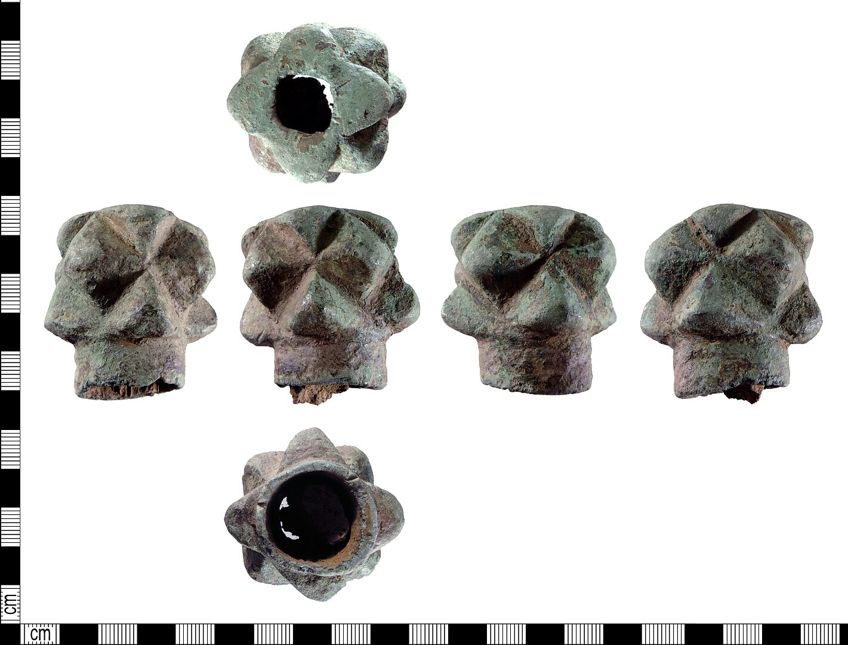 A medieval mace head (1250-1400); Derby Museums Trust, CC BY 2.0, via Wikimedia Commons
A medieval mace head (1250-1400); Derby Museums Trust, CC BY 2.0, via Wikimedia Commons
Starting in the 14th century, the mace was the standard weapon of the Cavalieri, basically mercenary forces of Northern Italy employed by Italian city-states across Europe. The manufacture of body armor and weapons for the Cavalieri was centered in Milan, partly in support of the Milanese struggle to be independent of Papal power. Maces rarely serve a purpose in actual combat nowadays, but ceremonial maces are still often used as symbols of power, in processions and rituals, and for various other uses by governmental organizations and educational institutions.
War Hammers
A war hammer is a weapon of war from the late medieval period that is meant for close-combat action, and it comprises a handle and a head. Later war hammers were typically equipped with a spike on one side of the head, thereby making them a more versatile weapon. War hammers evolved as a result of the increasing use of wrought iron armor during the 14th century. Because the armor’s surface was now as hard as a blade’s edge, the blade ricocheted off the armor. Whereas weapons like swords could not effectively cause any damage to the armor, especially because it was usually curved, the war hammer was able to deliver direct blows with significant impact.
These war hammers, particularly when placed on a pole, have the potential to cause damage without needing to penetrate the armor. They were particularly effective at transmitting impact through even the thickest helmets and causing concussions.
When attacking other parts of the enemy’s body where the armor was considerably thinner, the spike on the other end of the hammerhead could be used. Warriors could also use the spike to grapple the target’s armor or shield. Sometimes the hammer would even be used on the legs of the horses to force the knights to the ground where they could be attacked more easily. The horseman’s pick was an Islamic-inspired weapon used by knights on horseback in Europe throughout the Middle Ages. This was a type of battle hammer with a very large spike on the back of the hammerhead. This spike was similar to a miner’s pickaxe, as it curved downwards. It could be used to cut through chain mail or heavy armor that the typical sword could not. However, the horseman’s pick’s usefulness was impeded by a number of flaws. Its relative weight made it awkward to handle and, as a result, could easily be avoided by the adversary. The damage caused by this weapon was also minor and seldom led to fatalities.
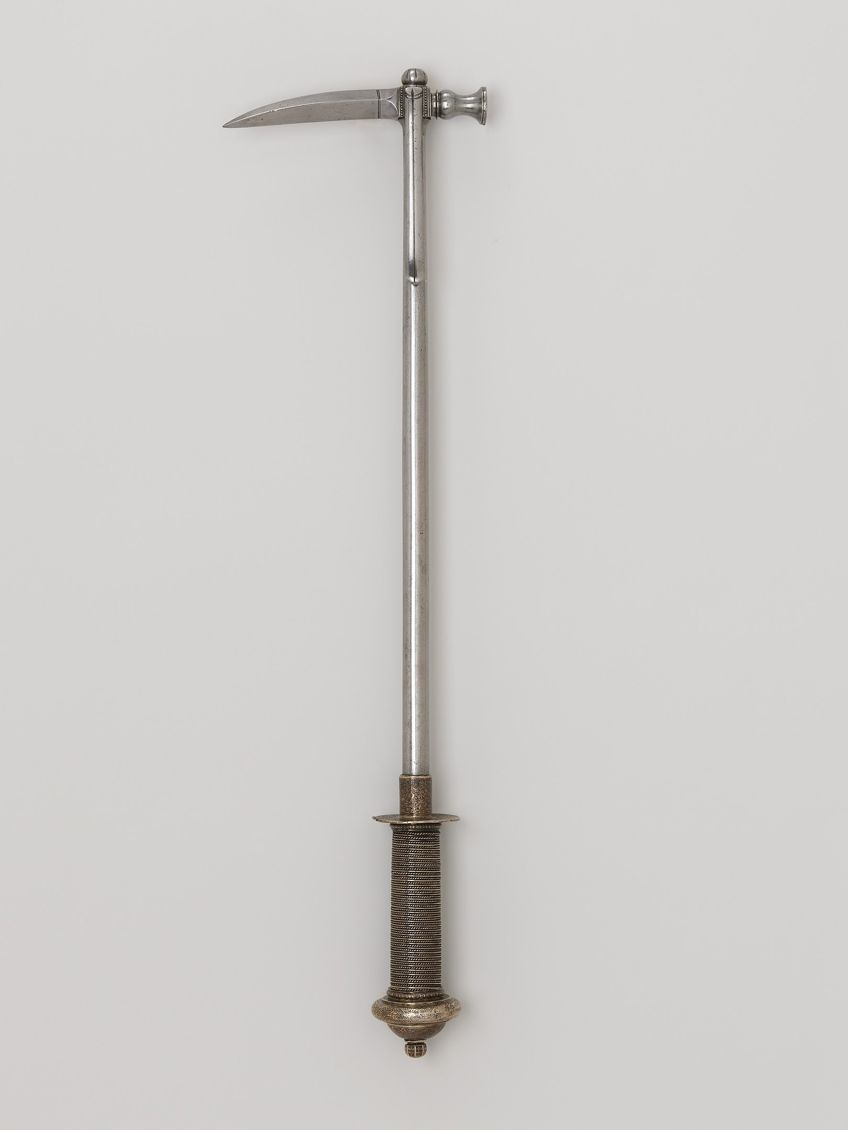 War Hammer, German, Saxony (16th Century); Metropolitan Museum of Art, CC0, via Wikimedia Commons
War Hammer, German, Saxony (16th Century); Metropolitan Museum of Art, CC0, via Wikimedia Commons
Pole Arms
Polearms are close-combat medieval weapons that comprise a striking component at the end of a wooden stick. A pole weapon, also known as a polearm, is a close combat weapon with the primary fighting element of the weapon located at the end of a long shaft, often made of wood. Polearms are used to either expand the reach of the weapon or to improve angular velocity (and hence striking force) when the weapon is wielded. The practice of connecting a weapon to a long shaft is ancient, dating back to the Stone Age. Polearms include glaives, spears, halberds, poleaxes, and bardiches. Staff weapons were grouped together under the general title “staves” in Medieval England. Pole weapons are quite easy to construct and use since they were often made from hunting tools or agricultural equipment.
Early in the history of organized warfare, massed warriors using pole weapons with sharp points became known as powerful military forces. On defense, the troops with polearms were difficult to reach; on assault, they were lethal to any troops that couldn’t get out of their way.
Polearms generally combined the spearpoint with an ax that could pierce or destroy armor. A quarterstaff is a common weapon that was used from the Middle Ages until the 18th Century. Quarterstaves were popular weapons among London Masters of Defence in the 1500s, and by the 1700s, the weapon had become a part of gladiatorial prizefighting. The quarterstaff was regarded as the most efficient of all of the era’s hand weapons, according to English fencing writers from the 16th to 18th centuries, who dedicate large sections of their writings to its use. A spear is a type of polearm made out of a wood shaft with a pointed tip. The head might simply be the sharpened end of the shaft, or it could be made of a different material that is connected to the shaft, like iron, obsidian, or bronze. The most common kind is a metal spearhead in the shape of a leaf or triangle. The term lance refers to a multitude of various polearms based on the spear. It gets its name from lancea, the javelin used by Roman auxiliaries.
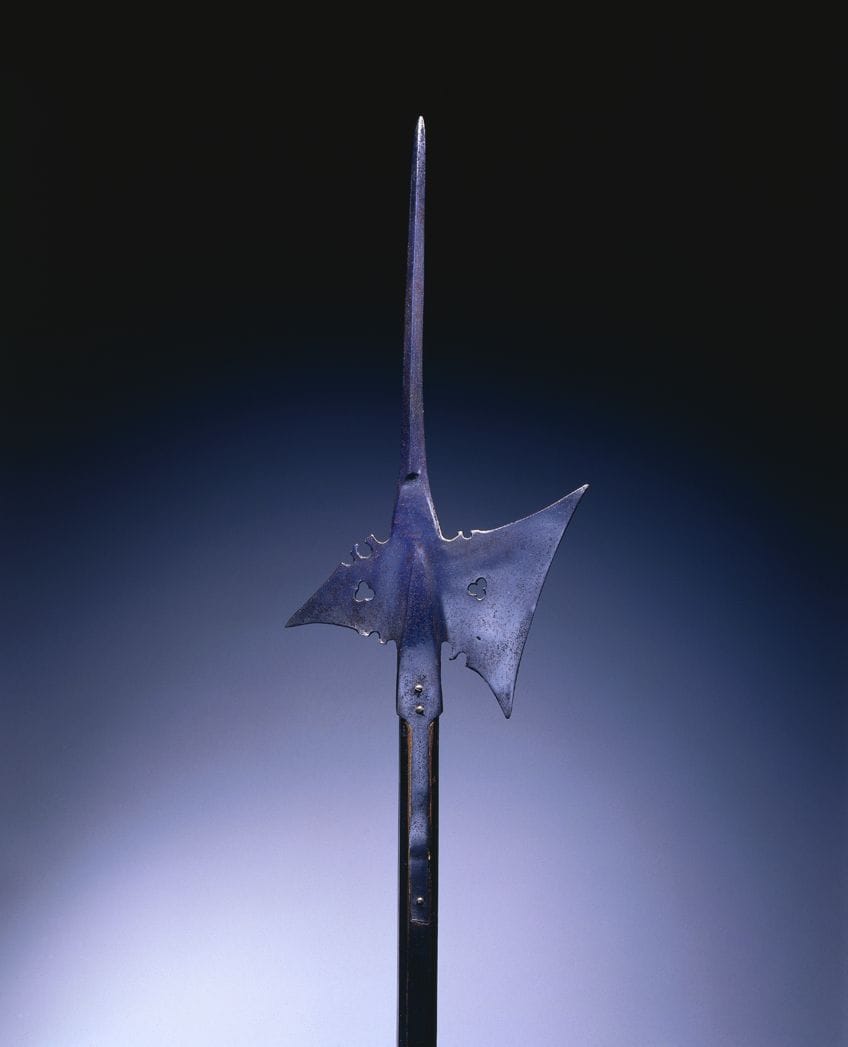 German Pole Arm (c. 1500); Cleveland Museum of Art, CC0, via Wikimedia Commons
German Pole Arm (c. 1500); Cleveland Museum of Art, CC0, via Wikimedia Commons
Throwing Axes
A popular throwing ax used as a weapon by the Franks during the Early Middle Ages was known as the Francisca. It was a prominent Frankish national weapon from the Merovingians’ reign spanning around 500 to 750 CE, and it is believed to have been employed throughout Charlemagne’s reign. Although associated with the Franks, other Germanic peoples of that time, notably the Anglo-Saxons, also used it. There are examples of these axes that have been discovered in England. The Francisca ax has a distinctive arch-shaped head that widens toward the cutting edge and ends in a sharp point at both the top and bottom corners.
Because of the length of the shaft and the head’s weight, the ax could be flung with significant momentum to an average range of around 12 meters.
Even if the blade’s edge did not touch the victim, the weight of the iron head could still cause significant injury. The Francisca axes’ weight, form, curvature, and imbalance also caused it to bounce unpredictably as it hit the ground, making it difficult for opponents to block. It could bounce up at the enemy’s legs, against shields, and pass through the ranks of enemies. The Franks exploited this by launching Francisca axes in a volley to disorient, frighten, and disorganize enemy lines before or during an attack to start close combat. The Francisca ax is still used today as a throwing ax in various modern contests and as a weapon by re-enactors of medieval combat.
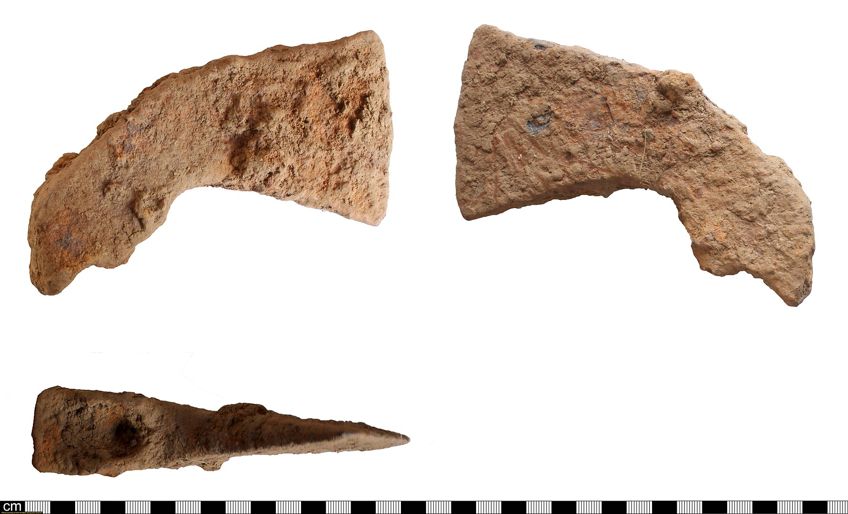 Early Medieval throwing axe Heads (c. 600 AD); Somerset County Council, CC BY 2.0, via Wikimedia Commons
Early Medieval throwing axe Heads (c. 600 AD); Somerset County Council, CC BY 2.0, via Wikimedia Commons
Javelins
The javelin is a light spear that is mostly used as a ranged weapon. Unlike many other ranged weapons, such as arrows and slingshots, which are projectiles launched by a mechanical device, the javelin is thrown by hand, and it was extensively used in medieval Europe. There is some historical evidence that suggests that the Norse utilized the javelin for hunting and combat, although they were more likely to employ a spear adapted for both thrusting and throwing. Among the funeral items discovered during Viking tomb excavations were spearheads and spears. They were amongst the most prevalent weapons discovered. The Vikings used javelins in warfare, according to an Anglo-Saxon poem describing the warfare of Maldon in 991 CE.
Soldiers in Anglo-Saxon battles would form shield walls and wield heavy weapons such as swords, Danish axes, and spears.
Javelins were employed as offensive weapons from behind these shield walls or by soldiers who left the protected formation and attacked their adversaries. Jinetes were light horsemen from Spain who fought with a sword, shield, and javelin. This particular type of troop emerged in the Middle Ages in reaction to the Moors’ massed light cavalry. They were skilled in skirmishes and fast movement and played a vital part in mounted combat for the Spanish throughout the Reconquista and up to the 16th century. The javelin was a prominently used weapon of the Welsh, especially the North Welsh. The main Welsh technique during Norman and subsequent English invasions was to shower javelins on the invading army and then withdraw into the mountains or woodlands before they could be attacked.
 Javelin Head (c. 600 AD); Metropolitan Museum of Art, CC0, via Wikimedia Commons
Javelin Head (c. 600 AD); Metropolitan Museum of Art, CC0, via Wikimedia Commons
Longbows
A bow is a weapon that shoots arrows by using its elasticity. It’s a type of spring. As the bow is pulled, potential energy is collected in the bow’s extremities and turned into kinetic energy when the string is released, with the string delivering the resulting energy to the arrow. A longbow is a tall bow that is nearly the same height as the person using it in some cases. Traditional longbows are crafted from one piece of natural wood. Longbows have been used for warfare and hunting for thousands of years. The English and Welsh were renowned in the Middle Ages for their potent English longbows, which were employed to great success in the period’s civil conflicts as well as against the French in the 100 Years’ War.
At the time of combat, a normal military longbow archer would be given between 60 and 70 arrows.
They would try and conserve their energy by not using too many arrows at once, as it was strenuous work. The activity not only exhausts the arms and shoulder muscles but also strains the fingers gripping the bowstring. In fact, even modern archers only release around six arrows every minute due to the strain that overexertion can cause. During the battle, resupply was required. Boys were frequently used to provide extra arrows to the archers while they were on the battlefield. Because these longbows could be manufactured from one piece of wood, they could be made quickly and easily. Amateur bowyers nowadays make a longbow in 10 to 20 hours, while highly competent bowyers may make hardwood longbows in a matter of hours.
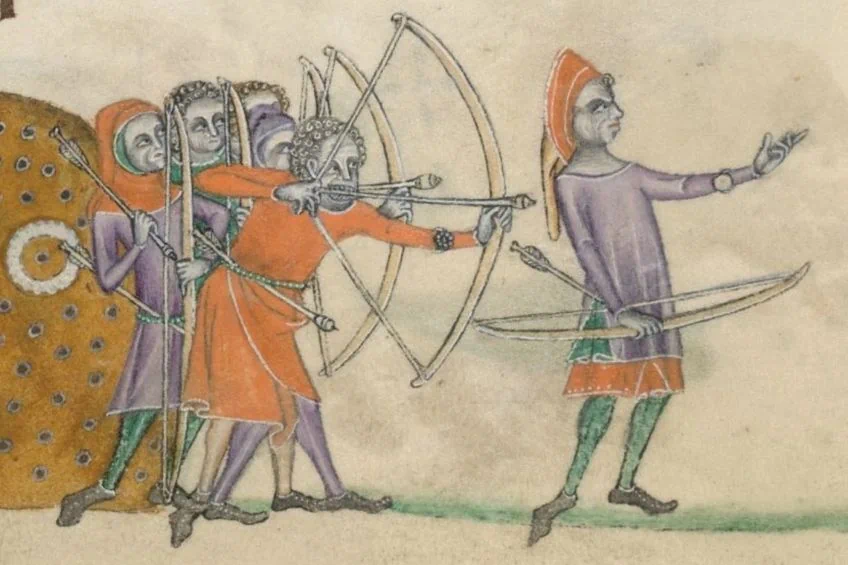 Longbowmen (1325) by unknown artist; Luttrell Psalter (détail), Public domain, via Wikimedia Commons
Longbowmen (1325) by unknown artist; Luttrell Psalter (détail), Public domain, via Wikimedia Commons
Crossbows
A crossbow is a long-range weapon that fires projectiles from a bow positioned on a stock. The medieval crossbow was known by a variety of names, most of which originated from the word ballista, which referred to a Roman torsion engine that resembled a crossbow in appearance. Crossbows used to play an important part in Mediterranean and European warfare. A crossbow is a bow that is placed on a stock and has a mechanism to keep the pulled bowstring in place.
When compared to regular bows, the crossbow prod is quite short, which results in a short draw length.
This leads to a larger draw weight for storing the equivalent amount of energy. Thick prods are less effective in releasing energy, but they can store more of it. Lightweight crossbows can be pulled by hand, while larger versions require the assistance of mechanical instruments. The most basic mechanical cocking mechanism is a hook linked to a belt that is drawn by extending the legs. Other devices included hinged levers that pushed or pulled the string into position and numerous cord-and-pulley crank devices known as windlasses.
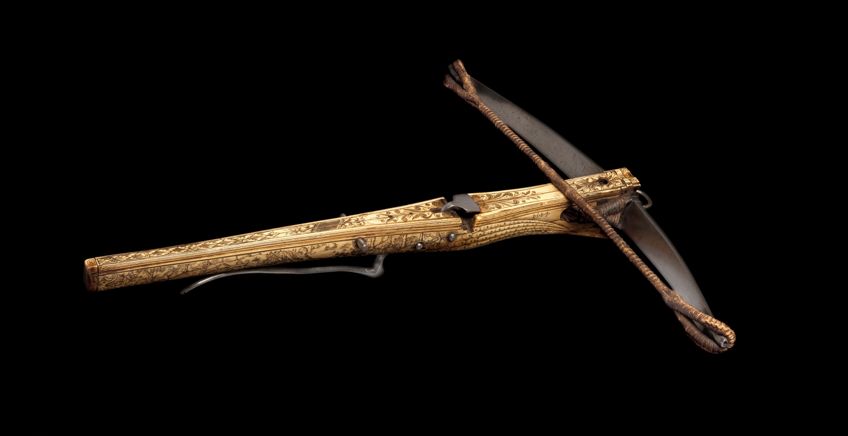 Central European, possibly southern Germany; Crossbow (15th Century); Metropolitan Museum of Art, CC0, via Wikimedia Commons
Central European, possibly southern Germany; Crossbow (15th Century); Metropolitan Museum of Art, CC0, via Wikimedia Commons
That completes our list of medieval weaponry. These weapons of the Middle Ages ranged from objects that could be made quickly and cheaply, such as repurposed agricultural implements, all the way to finely crafted and complex pieces of warfare equipment, such as crossbows. Many of these types of medieval weapons are still made today, either for hunting, sport, or ceremonial and symbolic use. This is a testament to the effectiveness of weapon design from this period, as well as the dedication of Medieval weapons enthusiasts who strive to keep the craft alive in the modern era.
Frequently Asked Questions
What Are Medieval Weapons?
These are the weapons that were produced in the medieval period, which spanned from the 5th to the 15th century. During this rather long period of time, many different types of medieval weapons emerged, from basic designs to complex designs that featured mechanisms for the release of projectiles. Medieval weapons include swords, daggers, knives, clubs, maces, war hammers, pole weapons, throwing axes, javelins, longbows, and crossbows. Of course, the combatants of this era also had to protect themselves from these dangerous weapons, so they wore protective gear, such as helmets, chainmail, and suits of heavy armor.
What Were the Most Popular Weapons of the Middle Ages?
During the Middle Ages, a wide range of weaponry was used, each having a distinct purpose. Knights, nobility, and professional soldiers made use of swords, which were highly prized and versatile weapons. Throughout the Middle Ages, bows were also prominently used as ranged weapons. Throughout the High Middle Ages, the longbow in particular rose to popularity. Crossbows were popular portable ranged weapons because of their simplicity of use and armor-piercing abilities. Polearms were very long weapons with a shaft and different blade or spike designs. Knights and foot troops both utilized battle axes, and they were efficient at piercing through armor, shields, and body parts.

I am deeply passionate about history and am constantly fascinated by the rich and complex stories of the past. As the editor-in-chief of learning-history.com, I have the opportunity to share this passion with a wide audience through the creation and distribution of engaging and informative content about historical events, persons, and cultures. Whether it’s through writing articles and blog posts or creating videos or podcasts, I strive to bring the past to life in a way that is both accurate and enjoyable. My expertise in history, combined with my strong writing and communication skills, allows me to effectively communicate complex historical concepts and make them accessible and interesting to a wide range of readers. I am truly grateful for the opportunity to share my love of history with others through my work on learning-history.com.

